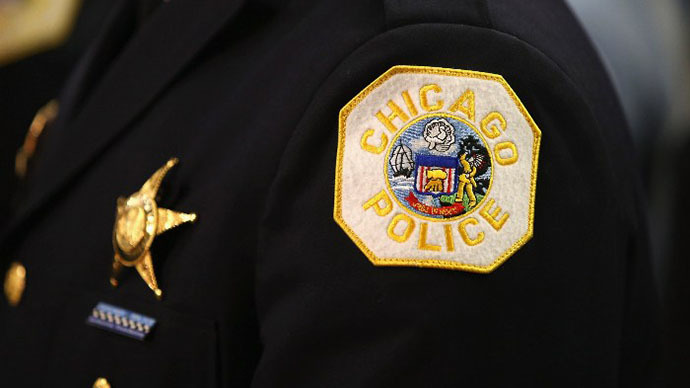Police officers in Chicago, Illinois can remotely access video shot from any of the city’s 24,000 closed-circuit television cameras, and they are already using that ability to nab suspects who thought they could outsmart surveillance.
According to a recent Chicago Sun-Time article by Pulitzer Prize-winning journalist Frank Main, police officers in the Windy City recently issued their first arrest stemming from the use of space-age facial-recognition technology coupled with thousands of cameras that collect live video in real-time at all hours of the day.
Pierre Martin, 34, was arrested on May 2 and charged with armed robbery in connection with two incidents from earlier this year. During one of those events, a video camera owned by the Chicago Transit Authority (CTA) and wired to the city’s three detective branches and the Criminal Information Prevention Center at police headquarters was rolling when Martin allegedly encountered his victim.
Months later, investigators were able to use the footage recorded using the CTA cameras and comb through a database of 4.5 million criminal booking shots in order to identify Martin as a person of interest. He is the first individual to be picked up by the CPD using the facial-recognition technology, but only one month after a city-wide roll-out he is likely to not be the last.
The Transportation Security Administration has given the CTA a $5.4 million grant to aid with the program, and that money has been used to update an already impressive arsenal of city-licensed surveillance cameras to run in tandem with NeoFace, a high-tech analysis program used by various governments and law enforcement agencies around the globe to grab biometric data off of an image and match it to another.
According to an April 2013 press release from NeoFace’s parent company, NEC Corporation of America, NeoFace exemplifies “facial recognition as an effective and non-intrusive tool for identification,” and has been deployed more than 200 times across 30 countries in only a few short years. Its use in Chicago is one of the latest, however, and the arrest of one individual already signals that other cities may follow suit.
“This was our first success,” Chicago Police Cmdr. Jonathan Lewin told the Sun-Times, adding, “as we pick up our training, you will see ongoing successes.”
Currently, Chicago cops can only rely on pre-recorded footage, with the system configured to avoid real-time surveillance. “It’s only post-event,” Lewin told the Sun-Times. But as similar programs become introduced elsewhere, the capabilities of systems like NeoFace are likely to put the activity of anyone, anywhere on the radar of authorities.
RT reported last week that the Metropolitan Police Department of Washington, DC feeds footage from over 150 speed cameras, 50 red light lenses and more than 120 other closed-circuit television cams across the city to special analysis centers where local investigators can try to identify people caught on film breaking the law after the fact. One lawmaker likely to pursue an opportunity to run for DC mayor next year told the Washington Times that he wants officers everywhere to be able to monitor those cameras in real-time, and intends on fighting for that ability as Election Day approaches. Civil liberty advocates in Chicago, DC and elsewhere aren’t impressed, however, and warn that systems such as NeoFace could let police profile anyone of their choosing.
“Given Chicago’s history of unlawful political surveillance,” Harvey Gross man of the American Civil Liberties Union of Illinois said in 2011, “it is critical that appropriate controls be put in place to rein in these powerful and pervasive surveillance cameras now available to law enforcement throughout the city.”
“The ubiquity and technological reach of Chicago’s surveillance camera system present a fundamental threat to the privacy and First Amendment rights of all persons in Chicago,” added ACLU of Illinois senior staff counsel Adam Schwartz in a statement at the time. “The current mayor and other city officials have said that their goal is to place a camera on every corner, blanketing the entire city in an integrated fashion. If that goal is achieved, the lives of residents of Chicago will be changed. We will be forced to make decisions about where to go and when with the knowledge that all of our actions can be watched and recorded.”
Two years down the road, those cameras are quickly growing in number and federal aid courtesy of the TSA is only helping speed up the process of putting an eye in the sky on every street block.
Lewin, the CPD commander that spokes to the Sun-Times for this week’s article, said, “There will absolutely no random surveillance — and facial recognition—of subjects in the public way.” Meanwhile, though, federal officers are investigating new ways to help identify anyone, anywhere using a database that aims to contain biometric information on every adult in the country. The Federal Bureau of Investigation has announced plans to have a database of 14 million photographs on file by next year when it rolls out its Next Generation Identification system, which will use surveillance camera clips and other footage to match suspects almost instantaneously up with a pool of persons derived from state DMV photo-shoots and other government-owned images. Both the Electronic Frontier Foundation and the Electronic Privacy Information Center have sued the FBI in hopes of learning more about the NGI program before its intended roll-out in 2014.

